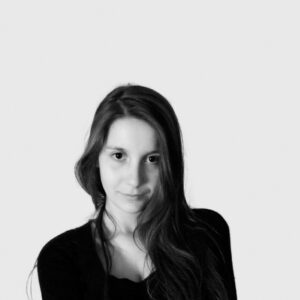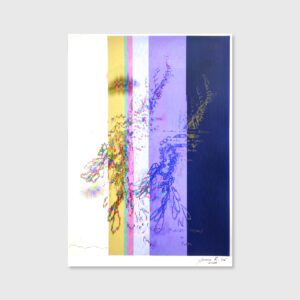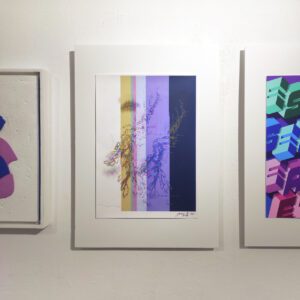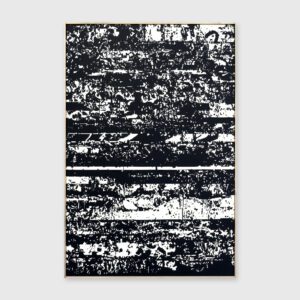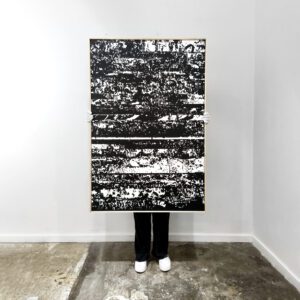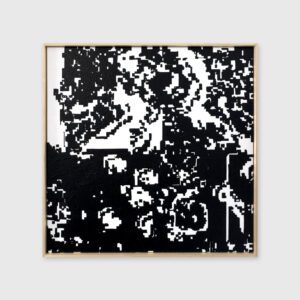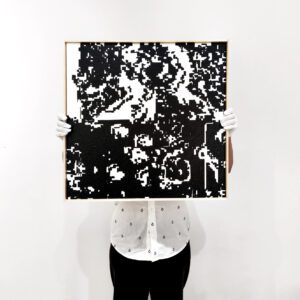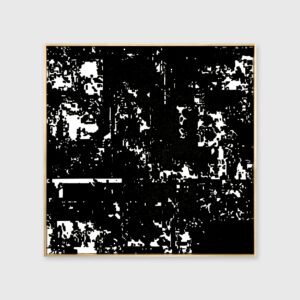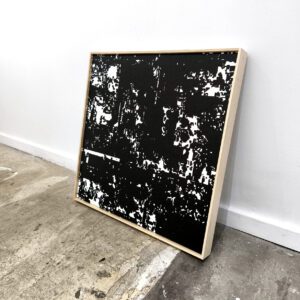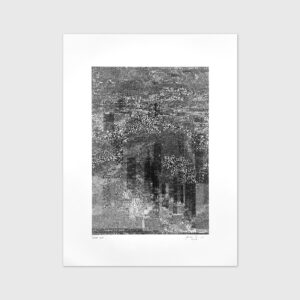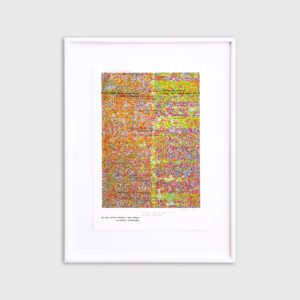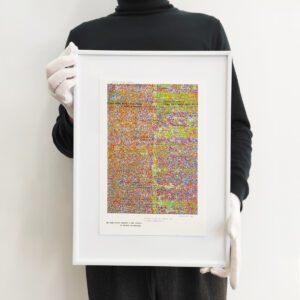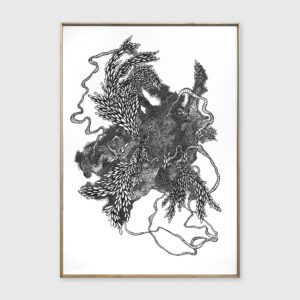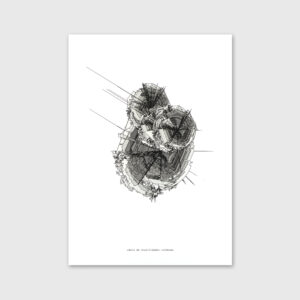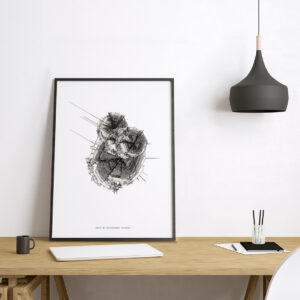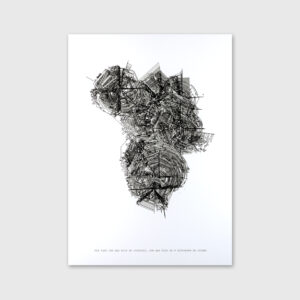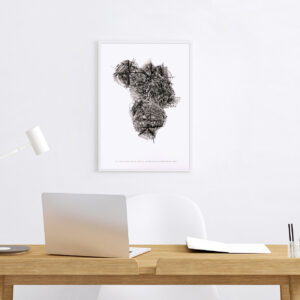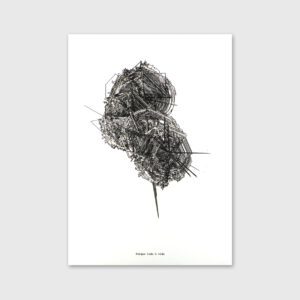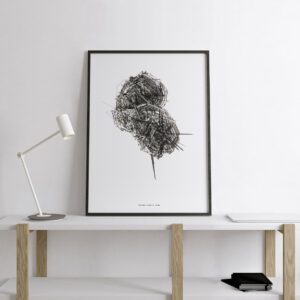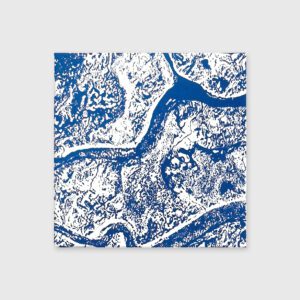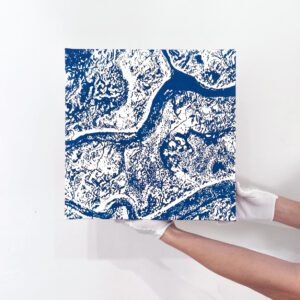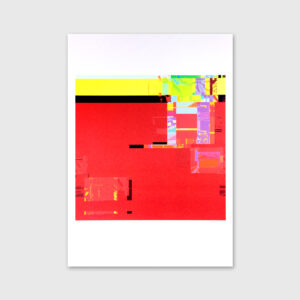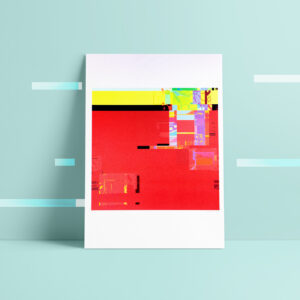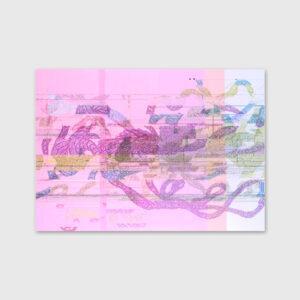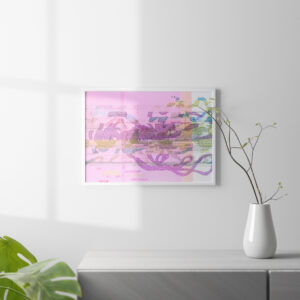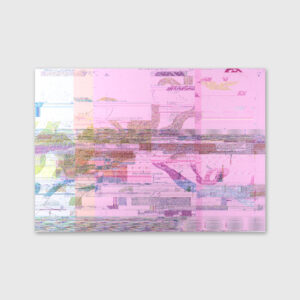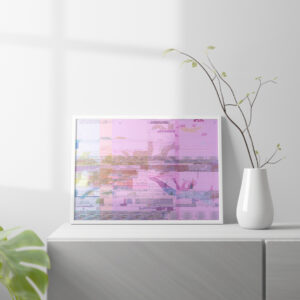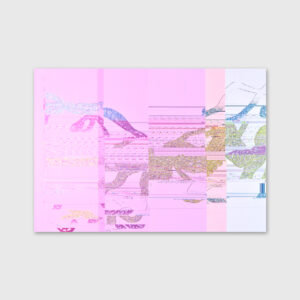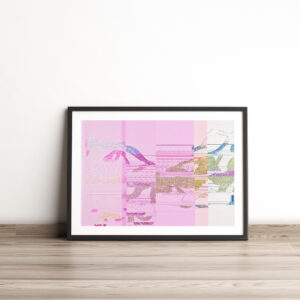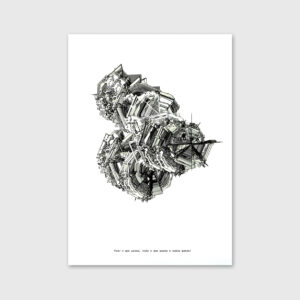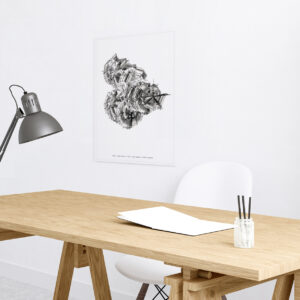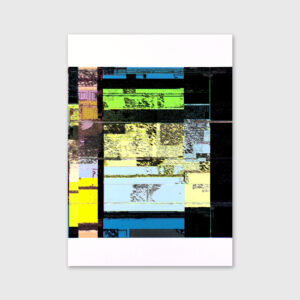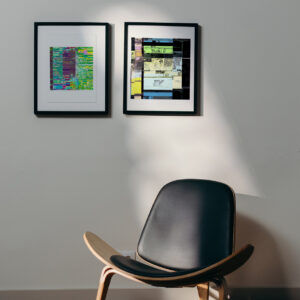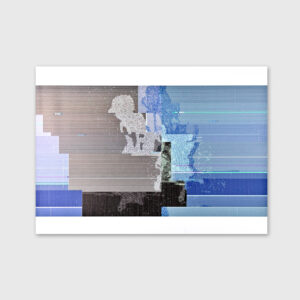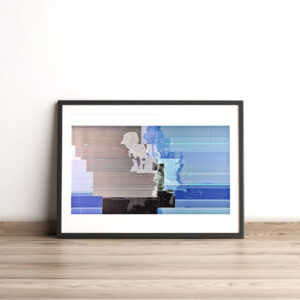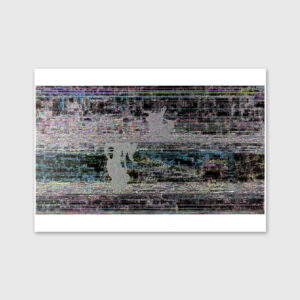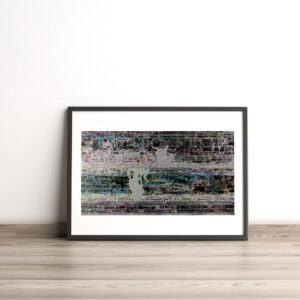Joana R. Sá
Joana R. Sá is a Portuguese multidisciplinary artist born in Mirandela (1993). She spent most of her life in Faro, where she currently resides. She obtaineda Bachelor’s degree in Visual Arts and a Post-Graduate degree in Visual and Performing Arts from the University of Algarve. More recently, she received a Master’s degree in Fine Arts, specializing in Drawing, from the Faculty of Fine Arts at the University of Porto with the project “Lapso: o desvio na imagem”.
Joana R. Sá’s work develops through drawing as an expanded field, conceptually presenting itself as a rhizome around the methodological exploration of deviation, gesture, memory, code, and language, through dichotomies about the organic and the artificial/mechanical/digital. Through the practice of a visual alphabet – indecipherable code records from her inner essence – the artist digitally deconstructs them through a process of databending, causing their corruption, so that she can execute the translation of digital artifacts, along with reminiscences of her alphabet. Her artistic process develops through encounters and mismatches, constructions and deconstructions, territorializations and deterritorializations, materializations and dematerializations, noise and harmonies, memories and unmemories.
She has participated in several exhibitions since 2013, highlighting her solo exhibition “Nuvens de Ruído” (2022, Associação 289), and her participation in numerous group exhibitions, including “Synchronicity” (2022, Plataforma Revólver), “Noroeste-Sudeste: Novas Perspectivas no Desenho” (2019, Fundação Júlio Resende: No Lugar do Desenho), “289 – Um Projecto de Pedro Cabrita Reis” (2018, Associação 289) and “Octagonal” (2017, Galeria Trem). She is currently an artist-in-residence at Associação 289, a collective of artists that promotes contemporary art events in the Algarve region.
Joana R. Sá was selected in the Open Call in 2021 and presented the solo exhibition ENTRE MUNDOS (BETWEEN WORLDS) at Apaixonarte in 2023.
Glitch art is a form of artistic expression that explores the aesthetics of errors in analog or digital systems. By intentionally introducing flaws into data, code or electronic objects, it creates visual distortions such as pixelation, color changes, double exposures and fragmented images. This practice values imperfections and challenges traditional ideals of perfection in art, celebrating the beauty of mistakes and the unexpected visual effects generated by technical glitches.


